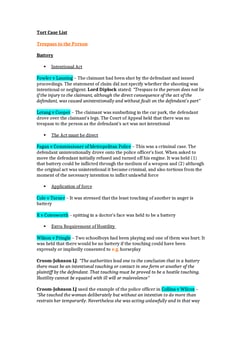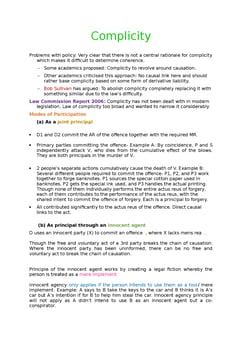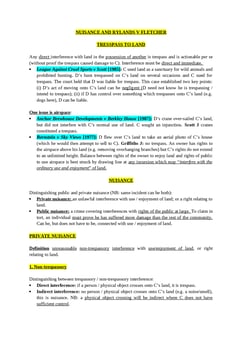Stephens v Myers [1830] 4 C & P 349; [1830] EWHC J37
Judgement for the case Stephens v Myers
Table Of Contents
KEY POINTS
The tort of assault refers to a legal concept where an individual intentionally creates an apprehension of imminent harmful or offensive contact in another person's mind, causing them to fear for their safety or well-being.
This tort does not require physical contact to occur; rather, it focuses on the mental anguish caused by the threat of harm.
Assault can encompass various behaviors, from verbal threats to menacing gestures, and can have significant legal ramifications in various contexts, including civil and criminal law.
FACTS
-
In the case involving the chairman (“Plaintiff”) at a church meeting, the events unfolded as follows:
The chairman was seated at the head of a table, with approximately six or seven individuals between him and a meeting attendee.
Tensions escalated during a heated discussion, leading the attendee to disrupt the meeting with vocal outbursts.
Subsequently, a motion was proposed and overwhelmingly supported to remove the attendee from the premises.
In response, the attendee threatened physical violence, expressing a preference to forcibly remove the chairman from his seat rather than leave the meeting voluntarily.
Advancing toward the chairman with a clenched fist, the attendee was intercepted by the churchwarden, positioned one seat away from the chairman.
Witnesses observed the attendee's aggressive demeanor and believed the attendee intended to strike the chairman.
The chairman subsequently initiated legal action, alleging assault against the attendee.
However, the attendee contested the claim, arguing that no assault occurred as the attendee was prevented from carrying out the act by the intervention of the churchwarden, thereby lacking the immediate ability to inflict harm upon the chairman.
JUDGEMENT
-
In rendering its judgment, the court deliberated on the defendant's words and actions in the context of assault.
It was determined that the defendant's verbal threat, coupled with the menacing advance towards the claimant, constituted an assault under legal scrutiny.
Crucially, the court underscored that the defendant's ability to execute the threatened harm was pivotal in assessing the occurrence of assault.
In this instance, had the defendant not been restrained by a third-party intervention, his actions would have likely resulted in physical contact with the claimant, thus fulfilling the requisite criteria for assault.
Consequently, the jury, after careful consideration of the evidence presented, unanimously found in favor of the claimant, affirming that the defendant had indeed committed an assault.
COMMENTARY
-
This case provides a comprehensive overview of the tort of assault, illustrating its legal definition and the absence of necessity for physical contact. It highlights the significance of the mental distress caused by the threat of harm, emphasizing the broad spectrum of behaviors that can constitute assault.
The events at the church meeting are detailed, illustrating the escalation of tensions leading to the threat of physical violence by the attendee towards the chairman.
The intervention of the churchwarden is noted, preventing the attendee from carrying out the threatened action.
-
The case on the court's judgment offers insightful analysis.
It emphasizes the court's focus on the defendant's intent and ability to carry out the threatened harm in determining the presence of assault.
The intervention by the churchwarden is acknowledged as a crucial factor.
Yet, the court highlights that the defendant's actions still met the criteria for assault, as the threat was imminent and the defendant demonstrated intent.
This case clearly explains the legal principles surrounding assault and offers a nuanced analysis, elucidating the court's reasoning in finding the defendant liable for assault despite the intervention of a third party.
For Further Study on Stephens v Myers
Need instant answers? Our AI exam tutor is here to help.
Ask questions 🙋 Get answers 📔 It's simple 👁️👄👁️
Our AI is educated by the highest scoring students across all subjects and schools. Join hundreds of your peers today.
Get StartedRelated Product Samples
These product samples contain the same concepts we cover in this case.
| Criminal law | Offences Against The Person Notes Real Notes (28 pages) |
| GDL Tort Law | Trespass To The Person Notes (10 pages) |



